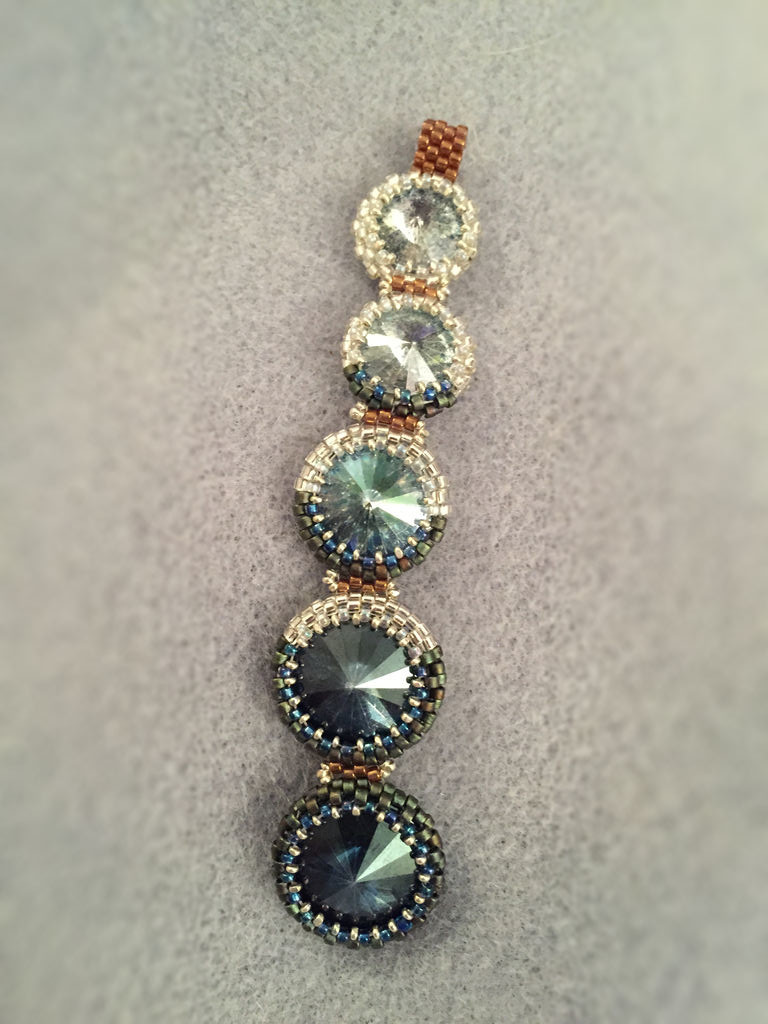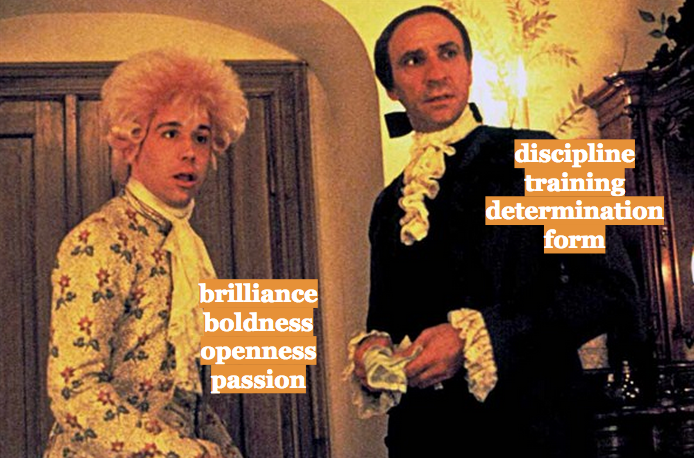The movie Amadeus has a lot to say about what it means to be an artist. We are shown two men who work in the same medium -- music -- but whose approaches to their art are dramatically and tragically opposed. Our narrator Salieri is religious, rigid, a trained expert with an almost mathematical approach to composition. Unfortunately for Salieri, he lives in a time and a city contemporary with the legendary Amadeus Mozart, a man of such natural genius that he waves a hand and perfect constellations of notes appear on the page. As depicted in the film, Mozart is childish, lecherous, rebellious, heedless, and completely, ridiculously talented. Salieri descends into an increasingly vicious spiral of bitterness and envy; Mozart's naïveté and blind enthusiasm lead him headlong into danger and misery and one of the saddest screen deaths you'll ever see. The trick, of course, is that a great artist must be both Salieri and Mozart.
You've got to have talent—but you've also got to have the discipline to use that talent as best you can. Imagine what Salieri could have done with Mozart's gift for easy composing. Imagine what Mozart could have done with Salieri's drive and ability to focus (and climb the social ladder in the imperial court). Mozart squanders his potential literally farting around Vienna, and dies with one of his greatest works unfinished. Salieri labors too much over the form of his pieces: they sound difficult and forced and even semi-idiot emperor Franz Joseph can tell something's missing.
Mozart is able to find artistic inspiration in everything. A cruel tirade from his mother-in-law becomes one of history's most well-known coluratura pieces, commonly known as the Queen of the Night aria (though technically she has another aria in the opera as well):
It's a beautiful, impossible set of notes and it gives me chills every time I hear it. Especially because set designers usually pull out all the stops for this one, as in this design for an 1815 production of The Magic Flute:

Look at those colors! The celestial dome of stars above and sunset clouds of chaos beneath! The weight of that tiny black figure in the center! I could stare at this painting for hours.
Naturally, I've been dreaming of a Queen of the Night-inspired piece of jewelry for some time now. It'll probably have to be several pieces, because there are too many possibilities of color, shape, and style that I want to explore. (Same goes for Botticelli's Birth of Venus, which I've turned into a bangle, a pendant, and three necklaces so far.)
But I have to start somewhere, and I still have that stash of crystal I mentioned before, so we're going to start with something simple.

It is -- not bad! A little imprecise in its execution. I need to pay better attention to my bezel maths and try to either center things more concretely or lean into the zig-zag. But the moon-bezel idea worked out rather well, so that part of the experiment is a success!
Until next time I shall, like Salieri, endeavor to practice.
Roads Not Taken:
- I could not think of a proper rope to match this pendant. That needs fixing in future iterations.
- The astronomical color palette is satisfying, but I can't help wondering what the gradients would do in flashy pinks and greens and golds.
- Turn this pendant sideways and make the center sizes larger, and you'd have a pretty stunning bracelet. That might be the thing I try next, to be honest -- a full silver/white/AB moon in the center, and smaller, darker moons fading away to either side.
